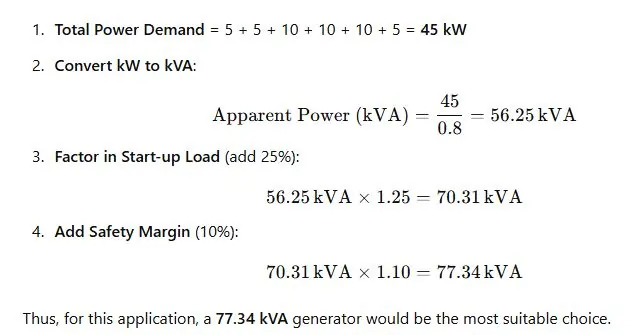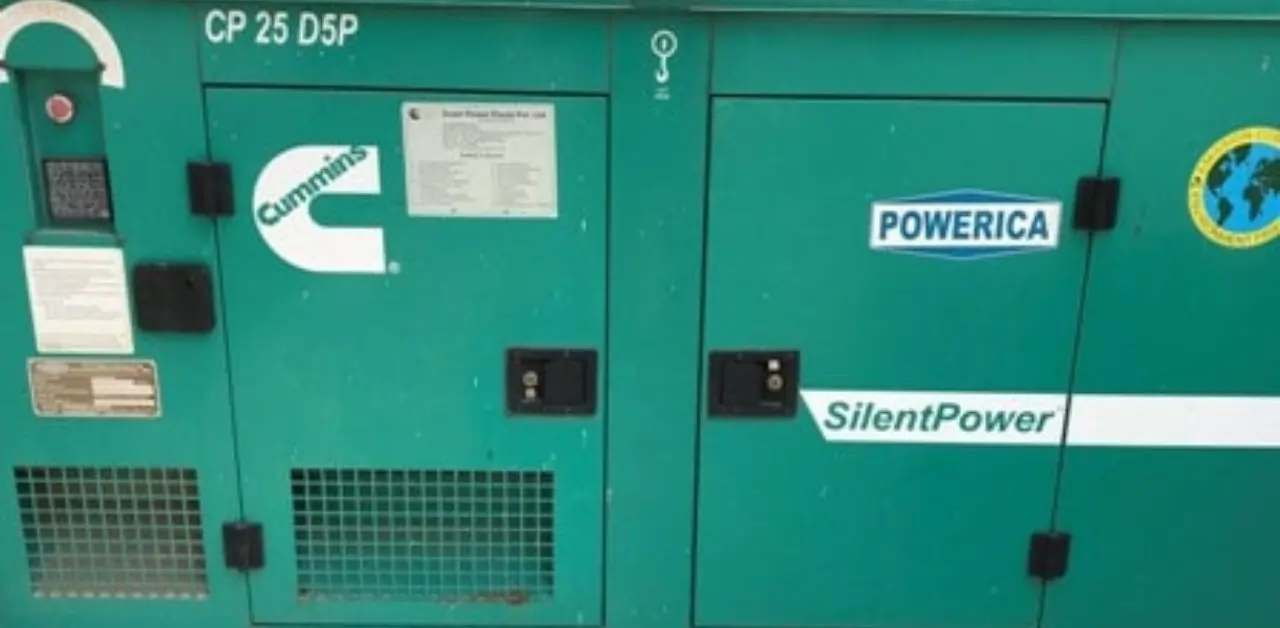How to Correctly Size a Diesel Generator
Selecting the appropriate diesel generator (DG) set for your ship or industrial application is crucial for ensuring reliable, efficient, and cost-effective operation. An incorrectly sized generator can result in inefficiency, higher fuel consumption, and potential operational disruptions. This guide provides a straightforward approach to help you accurately determine the right DG size for your specific requirements, whether for marine or industrial use.
Step 1: Assess Your Power Requirement
The first step in selecting the correct size of a diesel generator is calculating the total power demand of your ship or industry. The power requirements are usually measured in kilowatts (kW) or kilovolt-amperes (kVA). To make the calculation simple, follow these steps:
- Identify the Loads: List all equipment that will be powered by the generator. For ships, this could include navigational equipment, communication systems, lighting, air conditioning, etc. For industrial applications, it may include machinery, motors, lighting, compressors, and HVAC systems.
- Find the Power Rating of Each Load: For each piece of equipment, find the power rating (usually in kW or kVA). This can typically be found in the user manual or on the equipment nameplate.
- Calculate Total Power Demand (kW): Add up the power ratings of all loads. For example, if your equipment consists of three devices with power ratings of 10 kW, 5 kW, and 2 kW, your total power requirement would be:Total Power Demand (kW) = 10 + 5 + 2 = 17 kW
- Convert kW to kVA (if needed): If your generator is rated in kVA (which is more common), you can easily convert the total power demand from kW to kVA using the following formula:

Step 2: Factor in Start-up Load
When motors and heavy equipment start, they draw a higher power demand for a short period. This is called the starting load or inrush current. To account for this, you should typically add 25% to 30% to the total power requirement.
Using our example of 21.25 kVA:
Starting Load=21.25kVA×1.25=26.56kVA
So, in this case, you would need a generator with at least 26.56 kVA capacity to handle both the continuous and starting loads.
Step 3: Choose the Right Generator Type
Diesel generators come in two types based on their operation:
- Standby Generators: These are used in case of a power failure and are typically sized for the maximum peak load.
- Prime Power Generators: These are designed to run continuously and should be sized for continuous operation.
For industries or ships that require constant power, a prime power generator is necessary. Standby generators are sufficient for backup power
Step 4: Add a Safety Margin
It’s always a good idea to leave a margin for safety and unforeseen power demands. A common rule is to add 10-20% to the required generator size.
Using the previous example, we will add a 10% safety margin to the generator size:
Final Generator Size=26.56kVA×1.10=29.22kVA
Thus, your generator should ideally have a capacity of 29.22 kVA to ensure reliability and future-proofing.
Step 5: Consult the Manufacturer’s Guidelines
Manufacturers typically offer detailed specifications for their generator sets, including the minimum and maximum load capacity. Make sure to choose a generator that fits within the recommended capacity range to ensure longevity and performance.
Step 6: Consider Fuel Efficiency and Running Hours
For industries or ships that run for extended periods, fuel efficiency is crucial. Choose a generator with a good fuel consumption rate and a high-quality engine that offers extended service intervals.
Quick Example:
Let’s summarize the steps with a practical example. Suppose you have the following loads:
- 2 pumps (each rated at 5 kW)
- 3 motors (each rated at 10 kW)
- 1 air conditioning unit (5 kW)
Calculation:

Seven Most Important Steps you must know
1. List Your Equipment and Appliances
Before diving into the calculations, make a comprehensive list of all the equipment and appliances that will be powered by the generator. This includes:
- Lights and ventilation systems
- Computers and electronics
- Heavy machinery (for industries or construction)
- HVAC systems (heating, ventilation, and air conditioning)
For ships, you’ll also want to consider specialized equipment like navigational systems, communication tools, and onboard refrigeration units.
2. Check the Power Ratings
Each piece of equipment has a power rating that is typically given in watts or kilowatts (kW). You’ll need to check the user manuals or labels on each appliance to determine their power requirements.
There are two important power ratings to consider:
- Starting Wattage (Surge Power): This is the amount of power needed to start a motorized appliance, such as a pump or refrigerator.
- Running Wattage: This is the continuous power required to keep the equipment running after it’s started.
3. Calculate Total Wattage
Once you have the power ratings, add up the running wattage for all your equipment to find the total wattage required for continuous operation. For appliances with motors (like pumps or air conditioners), add the surge wattage as well.
For example, if your machinery requires:
- 5,000 watts for continuous operation
- 3,000 watts for startup
You’ll need to plan for 8,000 watts of total wattage for that specific appliance.
4. Consider Future Load Growth
It’s always wise to plan for the future. Consider any additional equipment or machinery you might add in the near future. It’s better to size your generator for slightly more power than you currently need than to find out later that you need an upgrade. A 10-20% buffer in capacity is a smart move.
5. Factor in the Generator’s Power Factor
Generators typically operate at a power factor of around 0.8, meaning they can only deliver 80% of their rated capacity as usable power. This is especially important for industrial applications where motors and pumps may have a lower power factor.
To adjust for this, divide your total wattage requirement by the power factor to find the generator’s required kVA (kilovolt-amps). For example:
- Total wattage requirement: 10,000 watts
- Power factor: 0.8
Required kVA = 10,000 watts ÷ 0.8 = 12.5 kVA
6. Choose Between Diesel and Gasoline
Once you have your generator size in kVA or kW, you’ll need to decide between a diesel generator or gasoline generator. Diesel generators are generally more fuel-efficient and last longer, making them ideal for larger, more demanding applications like industrial facilities, ships, and large construction sites. They are also better for continuous operation, whereas gasoline generators are more suited for smaller, short-term needs.
7. Account for the Generator’s Efficiency and Maintenance
Lastly, consider the efficiency and maintenance costs of the generator. Diesel generators are often more fuel-efficient, but they require more frequent maintenance to ensure longevity. When calculating the cost, factor in not only the initial purchase price but also fuel consumption, operational costs, and maintenance over time.
Final Thoughts
Choosing the right-sized diesel generator is crucial for ensuring that your ship or industry runs smoothly, efficiently, and without interruption. Always take into account your total power demand, starting load, and a safety margin. By following this simple method, you can confidently select a generator that meets your needs while ensuring long-term reliability and cost-efficiency.
If you are unsure about specific calculations or need additional assistance, consult with a generator expert or manufacturer who can provide personalized recommendations based on your unique requirements.
